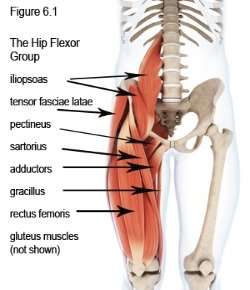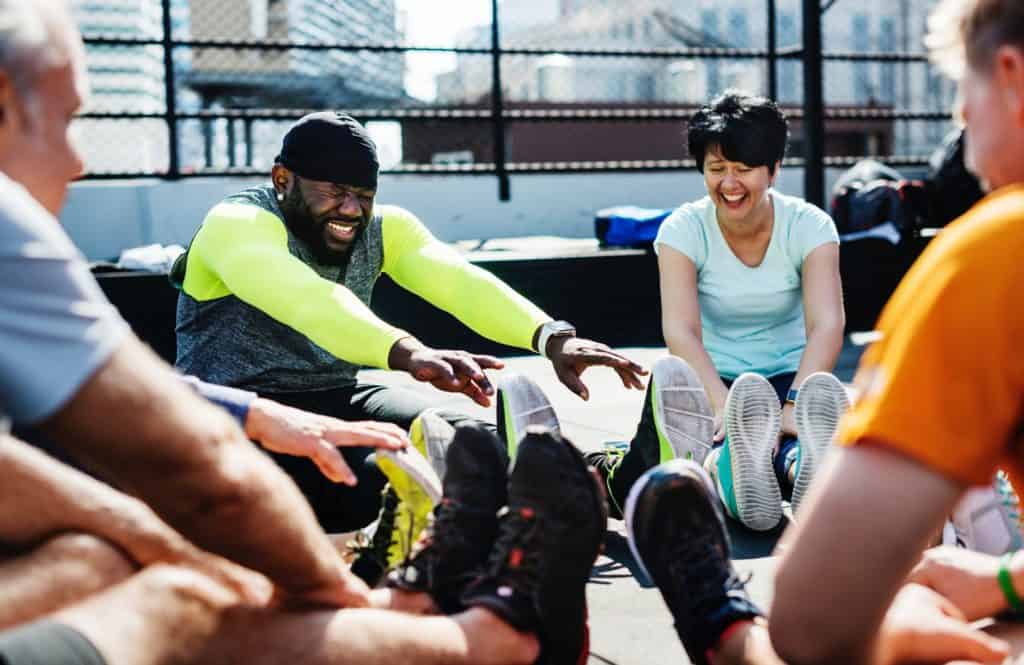Identify and Loosen Up Your Tight Hip Flexors
You might be surprised to learn that there are lots of individual muscles within your hips. Each of them doing their part to envelop your hips, allowing you to move your legs in all sorts of different directions. Front. Backwards. Sideways. Rotations. Without them you couldn’t kick a ball, run, bend at the waist, or sit in a chair without a lot of outside help.
When those muscles work, you hardly even notice. But, when any of them get too tight or you injure them, any movement in your lower body can be severely restricted, if not all together stopped. Discomfort and pain stemming from this area of the body is all too common in today’s world. How do we figure out if we have tight hip flexors, and how do we loosen them up if we do?
What are Hip Flexors?

One of the muscle group subsets found within your hip region are the hip flexors. These are the muscles that specifically control your legs allowing you to move through all the planes of motion they are capable of and through all sort of crazy directions and complex actions you do on a daily basis. The flexor group is made up of the following :
- Iliopsoas
- Tensor Fasciae Latae
- Rectus Femoris
- Sartorious
Each of them play a role in movement (obviously) and can have an impact on your range of motion if they aren’t in perfect working order.
What Causes Right Hip Flexors?
One of the biggest culprits of tight flexors is sitting.
Think about all the time people spend seated during the day. Office workers, IT folks, gamers. They all spend a ton of time seated every day, and when you sit your flexors shrink because they can. After all, they aren’t being stretched regularly, so why wouldn’t they shorten? Over time, they get shorter and shorter.
Likewise, they can also be caused through injury. Overuse or over stretching them can be just as detrimental to their health as underutilizing them. Injuries, such as overstretching, can cause the proprioceptors found within and around your muscles to activate and tighten up the muscle to avoid it being further injured. When this happens, they have to be gently stretched in order to release the tension and get back to normal elasticity.
Signs Your Flexors are Tighter Than They Should Be
Tight hip flexors can cause all sorts of problems, from swayback/hyperlordosis to knee pain to muscular imbalances. According to various studies, approximately 60% of Americans have tight hip flexors.

Thankfully, they are fairly easy to find if you know what to look for. Some signs you may have tight hip flexors include:
- Pain in the glutes
- Tightness or Pain in the lower back while standing
- Tight/Painful neck muscles
If you notice any of these issues, you might very well have some tight hip flexors.
In order to really verify, a modified Thomas Test will be able to determine if they are tighter than they should be.
Stretches and Exercises to Help Loosen and Strengthen Hip Flexors
Need some help?
Shape Success, Live Exceptionally
Hit that button, and get started today.
Foam Roller
Foam Rolling has all sorts of magical properties. They work wonders to help loosen up tight muscles. Roll out the area where your legs and your hips meet. Since your hip flexors include hard to reach areas heading into your groin, a smaller foam roller might work better than a wider one.
Pigeon Stretch

The classic pigeon stretch from yoga class is my personal favorite to stretch out tight hip flexors after a long run or cycle class. The deeper you can get into this pose, the more intense the stretch becomes. Don’t worry if you can’t go too far if you haven’t done this one before. You have to work your way into it.
Butterfly Stretch
Remember way back in gym class when your teacher had you do some butterfly stretches to help loosen up tight groin muscles? This stretch is the default move that most people go to in order to work on the inner thighs, groin, hips, and knees.
Spiderman Stretch
This stretch is similar to a lunge, but much deeper and really opens up the hips. Like the Pigeon stretch, the deeper you get into this, the more intense it gets. Pull your foot up even with your hands and really sink your hips into it. You’ll know it’s working.
How to Avoid Tight Hip Flexors
You won’t be able to completely remove the potential for tighter than normal flexors, but you can use the following ideas to work on reducing the potential.
- Move more. If sitting too long can cause them to shorten, get up every 30 minutes to an hour and walk around.
- Warm up and Cool Down before/after every workout
- Stretch often
- Get a massage
Working to proactively avoid tight hip flexors can go miles towards helping keep your joints young, reduce back and knee pain, and to walk confidently.
Let Us help You Out
At CONDITIONerd we are here to help you achieve better physical and mental health through exercise. Check out the plans we offer to our customers and see if you could benefit from working with our team. And if you have questions, you can always contact a CONDITIONerd team member.
Personal trainers, like those found here, can help guide you on your pathway towards reaching your fitness goals, whether that is getting bigger, stronger, faster, more lean, or just generally feeling better.
We can get you setup with a periodized workout plan, supplement information, and advice on nutrition to help you reach your goals.
The only thing you need is some motivation and a willingness to change some old habits.
Get into contact with us to find out what membership is right for you. In a CONDITIONerd program, you’ll be surrounded by others who can help you to get where you want to be.
Generally, our clients start to see some pretty awesome changes in 2-3 months time, some sooner.

